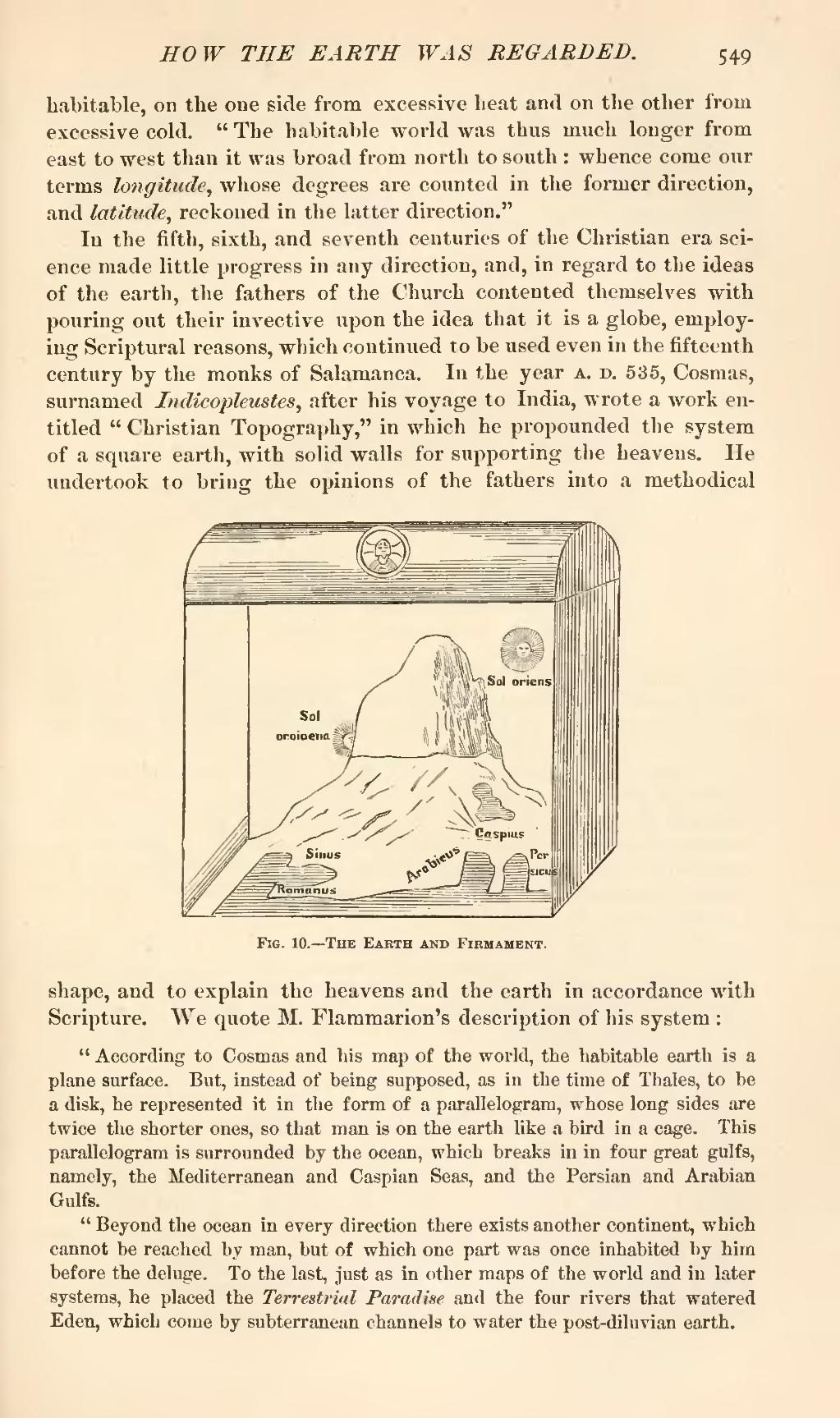habitable, on the one side from excessive heat and on the other from excessive cold. "The habitable world was thus much longer from east to west than it was broad from north to south: whence come our terms longitude, whose degrees are counted in the former direction, and latitude, reckoned in the latter direction."
In the fifth, sixth, and seventh centuries of the Christian era science made little progress in any direction, and, in regard to the ideas of the earth, the fathers of the Church contented themselves with pouring out their invective upon the idea that it is a globe, employing Scriptural reasons, which continued to be used even in the fifteenth century by the monks of Salamanca. In the year a. d. 535, Cosmas, surnamed Indicopleustes, after his voyage to India, wrote a work entitled "Christian Topography," in which he propounded the system of a square earth, with solid walls for supporting the heavens. He undertook to bring the opinions of the fathers into a methodical

Fig. 10.—The Earth and Firmament.
shape, and to explain the heavens and the earth in accordance with Scripture. We quote M. Flammarion's description of his system:
"According to Cosmas and his map of the world, the habitable earth is a plane surface. But, instead of being supposed, as in the time of Thales, to be a disk, he represented it in the form of a parallelogram, whose long sides are twice the shorter ones, so that man is on the earth like a bird in a cage. This parallelogram is surrounded by the ocean, which breaks in in four great gulfs, namely, the Mediterranean and Caspian Seas, and the Persian and Arabian Gulfs.
"Beyond the ocean in every direction there exists another continent, which cannot be reached by man, but of which one part was once inhabited by him before the deluge. To the last, just as in other maps of the world and in later systems, he placed the Terrestrial Paradise and the four rivers that watered Eden, which come by subterranean channels to water the post-diluvian earth.
